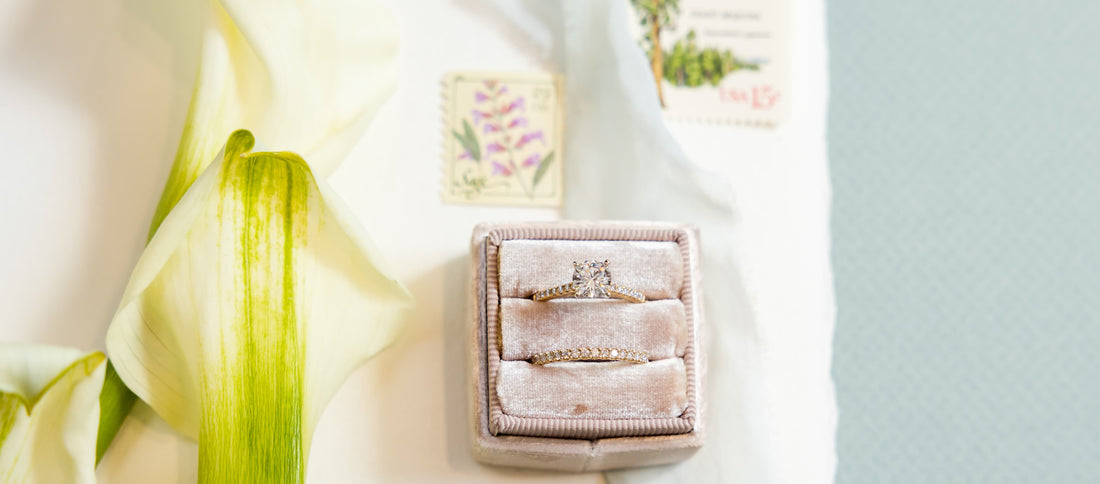When shopping for diamonds, whether for an engagement ring or simply something for a special occasion, its important to know exactly what you're getting. After all, diamonds can be an investment as well as a gift, and the process of buying them has many facets other than the ones on the surface.
Although choosing between a lab-grown (also known as synthetic) diamond and a natural diamond often comes down to personal preference, we've outlined the pros and cons of lab grown diamonds compared to natural diamonds, so that you can make the choice that fits what matters most to you.
Lab-Grown Diamonds:
Pros:
Ethical and Environmental Benefits: Lab-grown diamonds are, you guessed it, grown in a laboratory. For this reason, they don't share most of the ethical concerns associated with some mined diamonds, which may be sourced from regions where human rights issues or destructive environmental practices are common.
Sustainability: The process of creating lab-grown diamonds has a significantly lower environmental impact compared to mining. Furthermore, there is less direct damage done to animal habitats, waterways, and even small communities.
Price: Lab-grown diamonds are frequently more affordable than mined diamonds, sometimes up to 50% cheaper for a stone of the same size and quality. A lab-grown diamond can be a great choice for people who want the same sparkle without breaking the bank.
Variety: In recent years, labs have experimented with creating more diamonds with unusual colors or textures. Although mined diamonds can be found in a wide array of colors, it may be easier to find something specific in a lab-grown diamond.
Cons:
Perception: Many people still consider lab-grown diamonds to be less valuable or less authentic than natural diamonds, although this perception is gradually changing. While this may make lab-grown diamonds cheaper, it also may effect their long-term value.
Limitations on Size: Currently, lab-grown diamonds are typically available in smaller sizes. While larger diamonds are possible, they often suffer from a decrease in quality unless your willing to pay a premium price.
Environmental Impact: Although man-made diamonds are shown to have a different and generally smaller impact on their immediate environments, they still require a significant amount of energy to produce. Worse, synthetic diamonds are often discarded when the outcome is poor, leading to unnecessary waste. They also might use a natural diamond as a "seed", meaning that mining can be part of the process anyways.
Mined Diamonds:
Pros:
Natural Beauty: Mined diamonds are formed deep within the Earth under immense pressure and heat, and their beauty and rarity is evident, particularly as a they increase in size.
Tradition and Sentiment: Natural diamonds have a long history of being associated with love, commitment, and tradition. For some, this simply can't be replicated with a stone that isn't from the Earth.
Investment Potential: Despite the many accusations the diamond industry has faced in recent decades, natural diamonds have proven to consistently appreciate in value. For some people, this may make buying a natural diamond a better financial decision than buying a man-made one.
Ethical Commitments: Many diamond wholesalers have responded to the ethical concerns raised about mined diamonds by making strong commitments to only source conflict-free diamonds, or even to make towns and mining communities healthier and safer. For jewelry stores like Portsche's, this means being able to offer natural diamonds with perfect confidence that their existence is contributing to a better life for the people that mined them.
Cons:
Ethical Concerns: The diamond-mining industry has faced ethical challenges, including concerns about harming communities, child labor, and environmental degradation, particularly in regions where diamonds are mined. Although Portsche's is careful to never offer diamonds with this kind of history, some might feel that mined diamonds are worth avoiding for these reasons.
Environmental Impact: The process of diamond mining can cause deforestation, habitat destruction, and soil erosion, as well as the pollution of nearby watersheds. For these reasons, the immediate impact of mined diamonds is almost always worse than lab-grown.
Price: Natural diamonds, especially larger or rarer ones, come at a premium cost due to their limited supply. This high cost can be a barrier for many customers.
Wrapping Up
Choosing between a lab-grown and a natural diamond largely depends on individual preferences and values, since both offer their own positives and negatives. Synthetic diamonds offer many positive impacts, including ethical and environmental benefits, affordability, and variety, though sometimes at the cost of quality and authenticity. The advantages of natural diamonds are that they still maintain a strong cultural and sentimental value for their natural beauty and rarity, and that they represent a sound investment. Ultimately, the decision is a matter of personal priorities, and at Portsche's, we will help you find the stone that's right for you, whatever the occasion.

